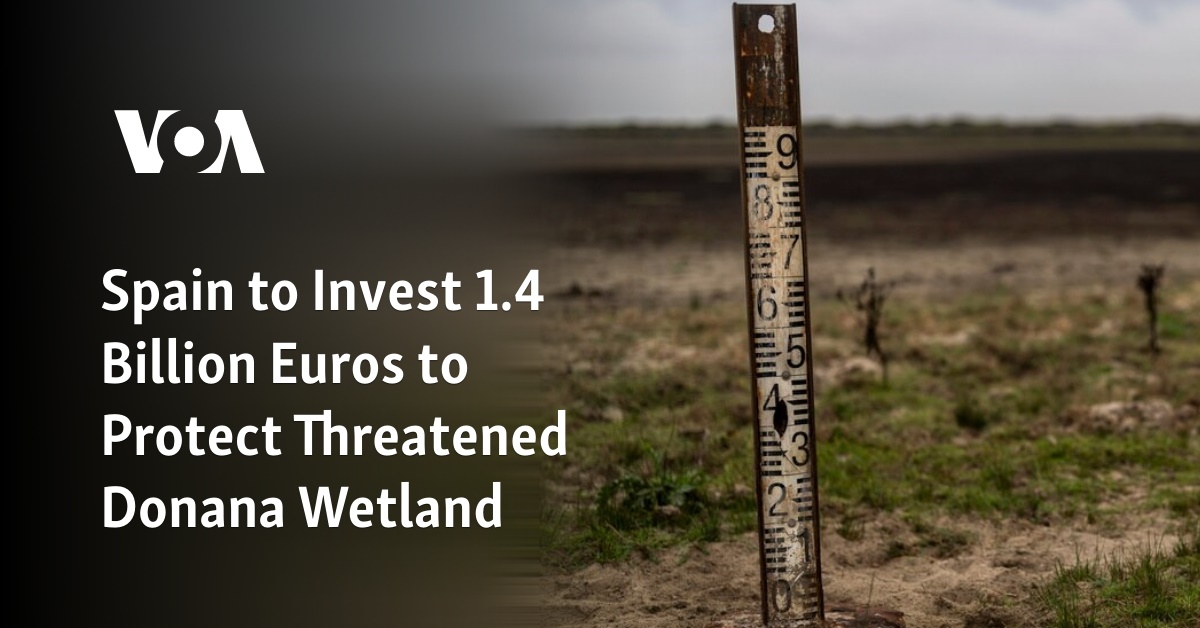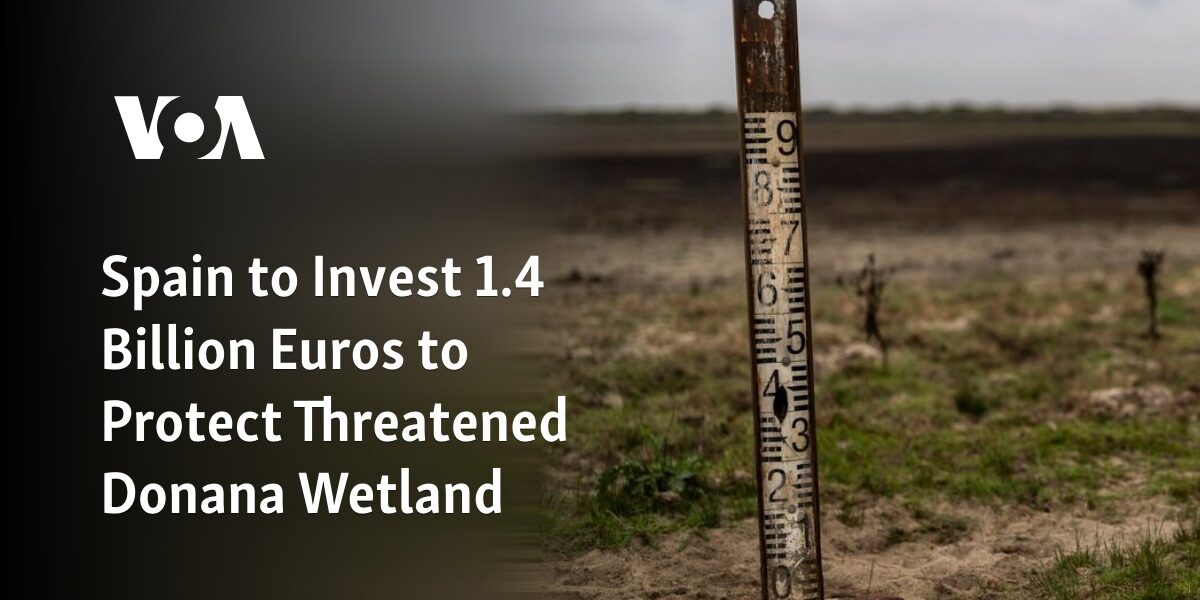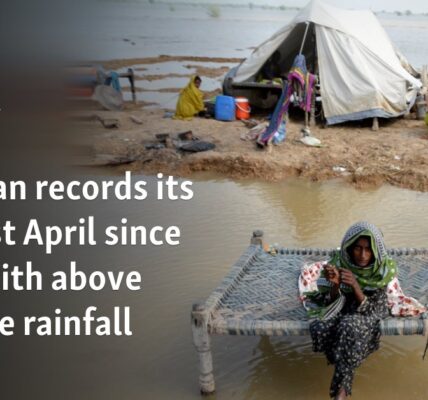Spain plans to allocate 1.4 billion Euros towards preserving the at-risk Donana Wetland.

On Monday, Spanish national and regional governments agreed to allocate 1.4 billion euros ($1.5 billion) to protect the surrounding areas of Donana National Park and prevent it from becoming too dry.
The goal of the plan, according to Spanish Ecological Transition Minister Teresa Ribera, is to incentivize farmers to stop growing crops that use excessive amounts of water from underground aquifers. These aquifers have been overused in recent years, causing harm to one of Europe’s biggest wetlands.
Ribera stated that this agreement will alleviate the strain on a rare and precious natural resource.
The President of the Andalusia region, Juan Moreno, announced that farmers will be given financial rewards for ceasing cultivation and reforesting areas near 14 towns near Donana. Those who choose to keep farming will receive less money, but are required to switch to environmentally friendly dry crops.
Under the terms of the agreement, Andalusia has agreed to cancel their previous proposal to increase irrigation in the vicinity of Donana. This decision had been met with criticism from UNESCO, the national government, and environmentalists, who expressed concerns about additional strain on the aquifer.
Donana is a designated UNESCO World Heritage Site and Biosphere Reserve. It serves as a wintering location for 500,000 waterfowl and a stopping point for countless migratory birds traveling from Africa to northern Europe.
Ecologists who study the park and its surrounding areas have consistently cautioned about the detrimental impact of agriculture and tourism on its marshes and lagoons. This has been exacerbated by the effects of climate change, including a prolonged drought and unprecedentedly high temperatures.
Andalusia has recently proposed a strategy to expand the Donana park by acquiring 7,500 hectares (18,500 acres) of land from a private owner for a cost of 70 million euros.
Donana currently covers 74,000 hectares (182,000 acres) on an estuary where the Guadalquivir River meets the Atlantic Ocean on Spain’s southern coast.
Source: voanews.com




